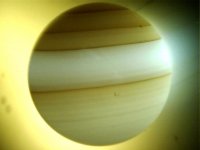Camelotshadow
Well-known member
- Joined
- Jun 12, 2017
- Messages
- 361
Looking with a new eye to pearls on top the maglite.
I can see a bead in the Miki 7.7mm of about 1mm nacre
I think I can also see the bead in an old 7mm with 1mm bacre.
An older pair of 8.2 mm looks like a bead with a nacre of 1.5mm to 1.7mm
Now the tough ones
A very old pair of pearls with old mine cut diamonds is showing what looks like banding but it goes all the way to the end of the pearl & a bead shoudl not be that big n an old pearl...I can't see a bacre line & the pearl looks the same all the way through...will try to get a pic.
Suspect 9,2mm yellow south sea is not showing a bead...looks same yellow
Supposed white south sea 8.3 mm off round with diamonds from 40's can't really see a bead..looks all pearl /7 /i see what looks like a bubble near the surface???? They are pearlls not glass/. The buuble is too close to the surface & would be within 1mm so that should be nacre in a cultured pearl...
What should look for next? Some sort of appear natural???
That one with stripes is odd
Pics
1 2 stripes on maybe 8mm earringsfrom 1930 no besd seen
34 Suspect yellow south sea 9.2mm on old 40's 50's plat setting? no bead seen
56 8.3 mm off round pearls on 1940 circa settings no bead seen
7 7.7mm miki 2005 bead w about 1mm nacre
8 old 8.2mm bead with about 1,5 1,7mm nacre
Does that look about right?
I can see a bead in the Miki 7.7mm of about 1mm nacre
I think I can also see the bead in an old 7mm with 1mm bacre.
An older pair of 8.2 mm looks like a bead with a nacre of 1.5mm to 1.7mm
Now the tough ones
A very old pair of pearls with old mine cut diamonds is showing what looks like banding but it goes all the way to the end of the pearl & a bead shoudl not be that big n an old pearl...I can't see a bacre line & the pearl looks the same all the way through...will try to get a pic.
Suspect 9,2mm yellow south sea is not showing a bead...looks same yellow
Supposed white south sea 8.3 mm off round with diamonds from 40's can't really see a bead..looks all pearl /7 /i see what looks like a bubble near the surface???? They are pearlls not glass/. The buuble is too close to the surface & would be within 1mm so that should be nacre in a cultured pearl...
What should look for next? Some sort of appear natural???
That one with stripes is odd
Pics
1 2 stripes on maybe 8mm earringsfrom 1930 no besd seen
34 Suspect yellow south sea 9.2mm on old 40's 50's plat setting? no bead seen
56 8.3 mm off round pearls on 1940 circa settings no bead seen
7 7.7mm miki 2005 bead w about 1mm nacre
8 old 8.2mm bead with about 1,5 1,7mm nacre
Does that look about right?
Attachments
-
 Candle Old mine band P1030060.jpg26.3 KB · Views: 70
Candle Old mine band P1030060.jpg26.3 KB · Views: 70 -
 Candle Old mine band P1030061.jpg28.4 KB · Views: 57
Candle Old mine band P1030061.jpg28.4 KB · Views: 57 -
 Candle yellow SSP P1030069.jpg31 KB · Views: 59
Candle yellow SSP P1030069.jpg31 KB · Views: 59 -
 Candle yellow SSP P1030072.jpg32.3 KB · Views: 62
Candle yellow SSP P1030072.jpg32.3 KB · Views: 62 -
 Candle whiite old trans SSP P1030077.jpg27.2 KB · Views: 59
Candle whiite old trans SSP P1030077.jpg27.2 KB · Views: 59 -
 Candle whiite old trans SSP P1030081.jpg30.1 KB · Views: 68
Candle whiite old trans SSP P1030081.jpg30.1 KB · Views: 68 -
 Candle Miki 7.7 P1030082.jpg31.2 KB · Views: 81
Candle Miki 7.7 P1030082.jpg31.2 KB · Views: 81 -
 Candle 8.2mm P1030091.jpg31.5 KB · Views: 57
Candle 8.2mm P1030091.jpg31.5 KB · Views: 57
























